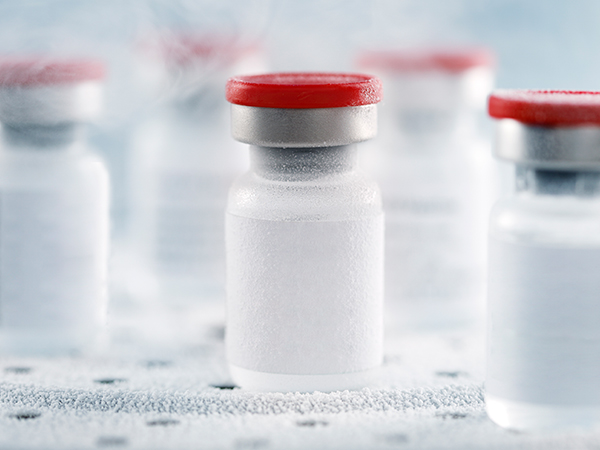
Freeze-drying is a critical intermediate step in the preparation of many different products. It is most commonly associated with food preservation and the invention of instant coffee, but there are freeze-drying processes suitable for preparing a more sophisticated class of product. Lyophilization, for example, is a critical method of dehydrating bulk pharmaceutical ingredients. But how does it work and why is it beneficial in the context of microsphere formulation?
What is Freeze-Drying?
There is no discernible difference between lyophilisation and freeze-drying; the former is simply a more technical synonym for the latter. Lyophilization is effectively a drying process in which a product is cooled to a temperature below its triple point; where the gas, liquid, and solid phases of said product exist in a thermodynamic equilibrium.
The freezing process is deceptively complicated, as the goal is to maximise the formation of large ice crystals to expedite sublimation. Ice within the product sublimates, rather than melts, as the product is heated under vacuum conditions. This process can reduce residual moisture content to as low as 1% and may decrease product drying times by a third. Naturally, these benefits pose significant cost-savings for pharmaceutical manufacturers, but freeze-drying can further enhance critical quality attributes of pharma ingredients too.
Why are Pharma-Grade Microspheres Freeze-Dried?
Pharmaceutical microsphere preparation can be a challenging prospect. These microscale components often referred to as balls, beads, microbeads, or spheres, have varying compositions based on a growing range of candidate materials. Drug manufacturers can generate high-performance microspheres from ceramics, glass, polymers, silicates, and more, enabling varied functionality for pharmaceutical applications and beyond. However, this variety contributes to a lack of uniformity when it comes to preparation and development, thus there is no single consensus as to the best method of preparation. Drying is a key process in microsphere formulation, and freeze-drying is one of the preferred methods. Microspheres lend themselves exceptionally well to freeze-drying, given that they must be prepared in a dry state to prevent premature release of the active component. Additionally, there are often certain stability issues with microspheres that can be overcome by freeze-drying.
How Freeze-Drying Fits in to Microsphere Formulation
Microsphere formulation is an extremely complex, multi-step workflow. First, the microspheres must be synthesized and then harvested. Polymeric microspheres–one of the preferred drug delivery vehicles for novel pharmaceutical–are typically derived from coacervation, evaporation, or spray drying, before being refined via de-watering, washing, drying, blending, and–in many cases–freeze-drying.
Freeze-drying is carried out by freezing the microspheres then applying an ultra-low vacuum and then increasing the temperature. Microspheres are freeze-dried because they become a flexible and porous solid once they have undergone the process. Additionally, they are dust free, have outstanding flow properties and are homogenous after being freeze-dried.
The freeze-drying method is becoming more widespread in pharmaceutical manufacturing because of its benefits for biopharmaceutical molecules and compounds with poor solubility. There could also be stability problems in the microspheres that can be corrected by freeze-drying. Additionally, all-in-one solutions that combine all preparation stages, from classification to recovery, make freeze-drying a more commercially viable option.
The Key Benefits of Freeze-Drying
- Combats poor solubility
- Enhanced stability
- Increased shelf life
- Maintains physical shape
- Storage at ambient temperatures
The MSR™Microsphere Refiner
Powder Systems Limited has been designing and manufacturing advanced technology for pharmaceuticals and chemical processing for over 30 years. Our flagship product is the MSR™ MicroSphere Refiner, a piece of cGMP equipment that drug developers and manufacturers can utilise for highly reproducible and scalable microsphere development.
The MSR™ has always empowered users with the ability to perform classification, drying, and sampling processes in a single instrument, yet industry needs have evolved. To address this, we have incorporated freeze-drying capabilities by adjusting the design and optimising critical ancillary systems. Our highly-engineered vacuum skid combined with more stringent temperature controls enable higher precision and automation capabilities for the tightest possible control of key process parameters.
Our Quality-by-Design (QbD) approach ensures that each facet of the instrument has been optimised to meet critical industry challenges. These include a fully optimised drying process with limited product transfer requirements, accelerating the overall refining process without compromising on quality.
For more information on our MicroSphere Refiner or microsphere applications, please don’t hesitate to contact us. We’re always happy to answer any questions.
